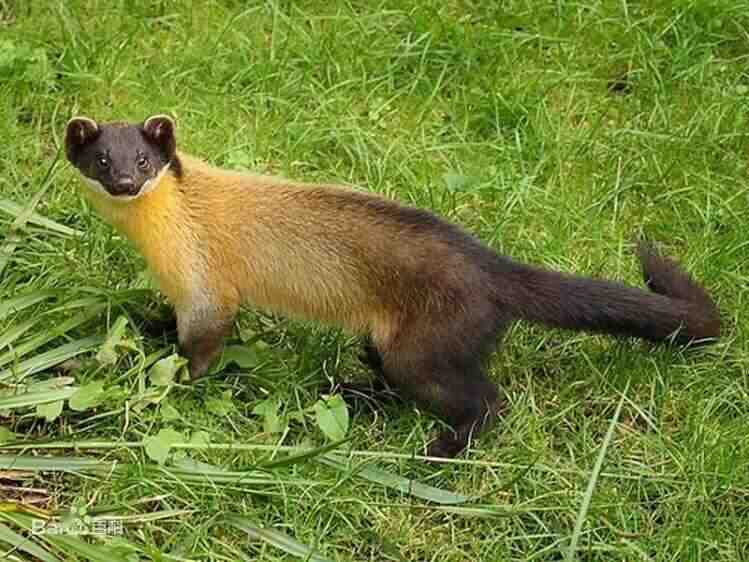Martes flavigula
IUCN
LCBasic Information
Scientific classification
- name:Martes flavigula
- Scientific Name:Yellow-throated marten, blue weasel, honey dog, yellow-waisted civet cat, yellow-waisted fox
- Outline:Carnivora
- Family:Carnivora Mustelidae Martes
Vital signs
- length:56-65cm
- Weight:2-3kg
- lifetime:14year
Feature
It is the only species of terrestrial mustelids that lives in groups and is known as the "wolf of the mustelid family".
Distribution and Habitat
Distributed in Bangladesh, Bhutan, Brunei, Cambodia, China, India, Indonesia (Java, Borneo, Sumatra), South Korea, North Korea, Lao People's Democratic Republic, Malaysia (Peninsular Malaysia, Sabah, Sarawak), Myanmar, Nepal, Pakistan, Russian Federation, Thailand, Vietnam.
Distributed in most parts of China, including Heilongjiang, Jilin, Liaoning, Hebei, Henan, Shanxi, Shaanxi, Gansu, Anhui, Zhejiang, Fujian, Taiwan, Hubei, Hunan, Guangxi, Guangdong, Hainan, Jiangxi, Sichuan, Chongqing, Guizhou, Yunnan, Tibet and other places.
Habitat altitude is below 3,000 meters. Active in evergreen broad-leaved forests and coniferous and broad-leaved mixed forests. In large areas of hilly or mountainous forests, but not affected by forest types, from the red pine forests of Lesser Khingan Mountains in Northeast China, the coniferous and broad-leaved mixed forests of Qinling Mountains, to the monsoon forests of Xishuangbanna, Yunnan, and the alpine forests of Taiwan and Hainan, there ar
Appearance
The ears are short and round, and the tail hair is not fluffy. The body is soft, slender and cylindrical. The head is relatively pointed and slightly triangular; the ears are round; the legs are short, and the limbs are short but strong. The front and rear limbs have 5 toes each, and the claws are thick, curved and sharp. The body fur is brighter, the head and neck back, the back of the body, the limbs and the tail are all dark brown to black, the throat and chest fur is bright yellow, including the waist is yellow-brown, and there is a clear black line on the upper edge, hence the name. The abdomen is gray-brown, the tail is black, and the fur is soft and tight.
The yellow-throated marten is a typical carnivore, and its prey ranges from insects to fish and small birds and animals. Among small animals, it often preys on squirrels and flying squirrels that move in trees. In addition, in addition to preying on young birds, it also preys on large pheasants, such as ring-necked pheasant
Details
The yellow-throated marten is an animal that lives in forest areas. Due to the reduction of forest area and the fragmentation of distribution areas, the overall number has decreased.

In the Mustelidae family, there is also a guy who fights all day long and also likes to eat honey - the yellow-throated marten. The size is second only to the "Wolverine" marten and the fisherman, and it belongs to the third in the marten subfamily. They go out in pairs every time, and sometimes they bring their cubs to form a group of up to a dozen. As the saying goes, unity is strength. With its flexible and agile posture, sharp toes and wolf-like hunting of prey, it is also known as the "wolf of the weasel family".
The yellow-throated marten has a strong ability to adapt to the environment. It is mainly active in the forest with food and concealment as the main conditions. This carnivore is ferocious and often hunts larger herbivores alone or in groups of several. It moves quickly and agilely, especially when chasing prey. It can jump long distances while running. It also has a high ability to climb trees. It is often active during the day, but more frequently in the morning and evening. It moves carefully and concealedly, and has good vision. When patrolling in the forest, if it hears a strange sound, it must stop first and listen to the sound. Sometimes it hides quietly between the tree poles to observe the movement on the ground. If it is a catchable prey, it will jump down and kill it.
As the yellow-throated marten is a forested animal, its overall population has declined over the past few decades, at least in Southeast Asia, due to the loss of forest area. However, the species still survives in the remaining forests (including secondary forests), perhaps because they are not the first choice of food for most residents, their ability to climb reduces the risk of falling into traps and other risks, and they can easily escape from dogs. Therefore, at the population level, there is no significant threat. Occasionally, they are hunted for their fur in Siberia (Russia) and North Korea.
Listed in the 2016 IUCN Red List of Threatened Species ver 3.1 - Least Concern (LC).
Listed in the second level of the "List of National Key Protected Wildlife in China".
Protect wild animals and stop eating wild game.
Maintaining ecological balance is everyone's responsibility!








